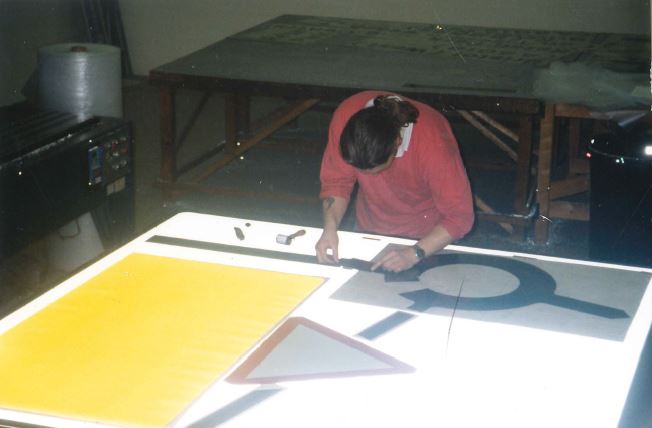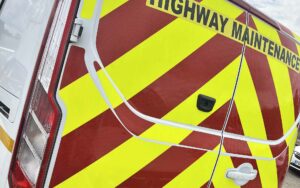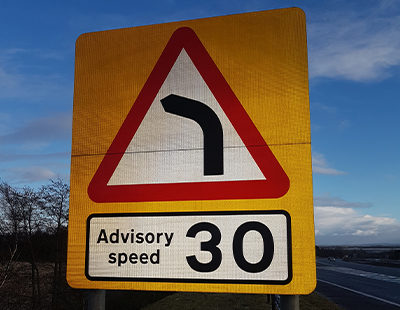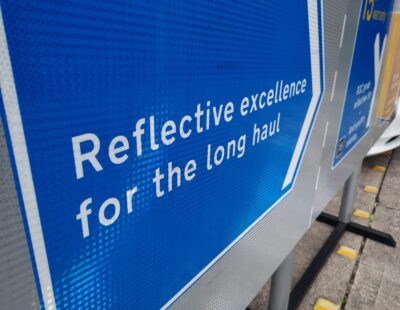The history of traffic safety signs is a fascinating journey that reflects the evolution of transportation and the increasing need for organised and standardised road communication. While we all know what modern road signs look like, there were a lot of stages in development that led to this point. Understanding the history of traffic safety signs gives insight into why things are the way they are and provides a foundation for looking to the future.
As one of the UK’s leading suppliers of retroreflective materials for traffic signs and vehicles, we at Lakeside Group have an important role to play in the continual evolution of the traffic safety signs.
In this article, we will cover the history of traffic safety signs and some of the leading regulatory bodies that are dedicated to enhancing road safety such as REMA and ARTSM. If you would like to know more get in touch.
How have traffic signs changed throughout the years?
Traffic signs started with the Romans, with milestones (quite literally, a stone that marks the distance of a mile) called “milliaries”.
It wasn’t until 1648 when it became law for public spaces to have guideposts at crossroads. This practice became more common after further legislation was passed in 1773.
In the 1800s, cycling became a popular mode of transport. In response to this “caution” and “danger” signs were erected.
With the rise of automobiles, traffic management became a critical concern. The Motor Car Act in 1903 made governing bodies responsible for warning signs for the motor industry, and many more signage features were introduced in the 1920s that still exist today. These include the “A” and “B” classifications for roads and painted white lines for various markings.
In the early days of road signage, signs were typically made of wood or metal and painted with reflective paint. However, these signs were not very effective at night, and visibility was a significant concern.
The breakthrough in reflective materials came with the invention of glass beads by Englishman Sir John Hall in the 1930s. Glass beads were applied to road markings and traffic signs to reflect light. This technology significantly improved visibility at night, marking the start of the retroreflective road safety industry whose legacy Lakeside Group continues today.
Around the same time, efforts began to create international standards for road signs. The Geneva Protocol of 1949 established principles for road sign design, and the Vienna Convention on Road Signs and Signals in 1968 further contributed to global standardisation.
Over the years, reflective technology continued to evolve. Innovations included improved durability, colour options, and enhanced retroreflective performance. Engineers and scientists worked on developing materials that could withstand harsh weather conditions and provide consistent visibility over an extended period.
Check out our blog – what is a retroreflective material & how does it contribute to road safety? >

Images courtesy of our valued customer, Signway, who have been manufacturing and installing permanent road signs in the UK for more than 50 years.
Technological developments have continued to guide the future of road traffic safety with regards to traffic signs. Electrical signs have been placed on roads all across the country that provide safety information, and retroreflective tapes have been used to highlight signs and increase their visibility in dark conditions. For a more in-depth look at road signs and their history, the UK government has a useful resource.
Lakeside Group supply a wide range of retroreflective materials to ensure that your signs and vehicles meet modern road safety standards, and are the leading supplier of products, including those from Avery Dennison, in the UK. Speak with a member of our team if you’re interested in finding out more.
What is the Retroreflective Equipment Manufacturers’ Association?
The retroreflective equipment manufacturers’ association (REMA) is the trade association for manufacturers of retroreflective traffic safety products which are used on highways, industrial sites, airports, and more.
REMA was founded nearly 40 years ago and is the co-ordinated voice for companies involved in the ever-changing traffic safety industry. The Association has regular and ongoing contact with government (DfT and HE), standards organisations (BSI and CEN), enforcers (Police) and users (Highways Authorities and Public Utilities).
As a member of REMA, we commit to only manufacture and supply products which conform fully to the latest standards, regulations and legislation. If you’re interested in our products and services, get in touch or find out more.
Have a look at our guide on all you need to know about micro-prismatic reflective materials. >
The Association for Road Traffic Safety and Management
ARTSM is an important acronym that you might have stumbled upon while learning about information relating to road traffic safety in the UK. But what is ARTSM?
The Association for Road Traffic Safety and Management, or ARTSM for short, is an important player in the field of road safety. Members of ARTSM are kept up to date on the latest developments in road traffic safety and are invited to take part in working groups which meet regularly to discuss issues in their respective fields and to consult on European and UK standards. Where necessary, ARTSM will make representations on behalf of its members to both central and local government.
ARTSM also publish articles on the latest industry developments and holds annual events that allow for networking – ensuring good relationships among the leading figures in the industry. As such, members of ARTSM are considered knowledgeable and trustworthy.
Lakeside Group have been a contributing member of ARTSM for many years, demonstrating our commitment to continual improvement and ensuring the products we supply are fully compliant with all the latest standards and regulations. Feel free to contact a member of our team to find out more.
Learn more about the advancements in road safety with our blog on how it can be improved. >
Keep the roads safe with Lakeside Group
The history of traffic safety signage has been a long one, and it will no doubt continue to progress with the introduction of new technologies. Make sure you stay up to date by working with an experienced and trustworthy name like Lakeside Group. We ensure that we follow all the latest guidelines and regulations of the traffic safety industry and are members of key organisations that provide us with the latest industry insights and developments.
If you’d like to find out more about our products, feel free to contact a member of the team or browse our list of products. Alternatively, take a look at some related articles below!
Learn more with our ultimate guide to dew resistant overlay film. >
Take a look at our beginners guide to reflective sheeting for traffic signs. >




